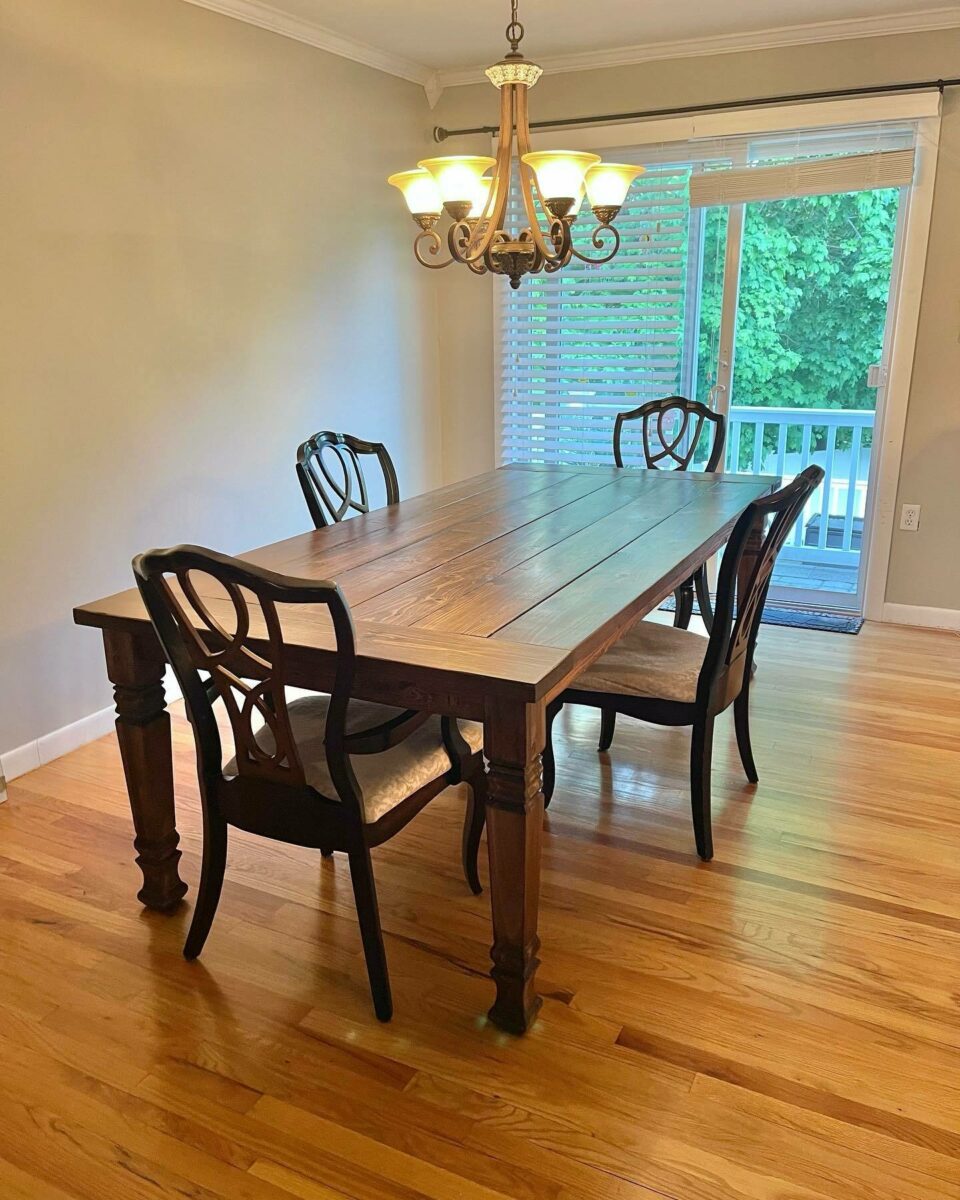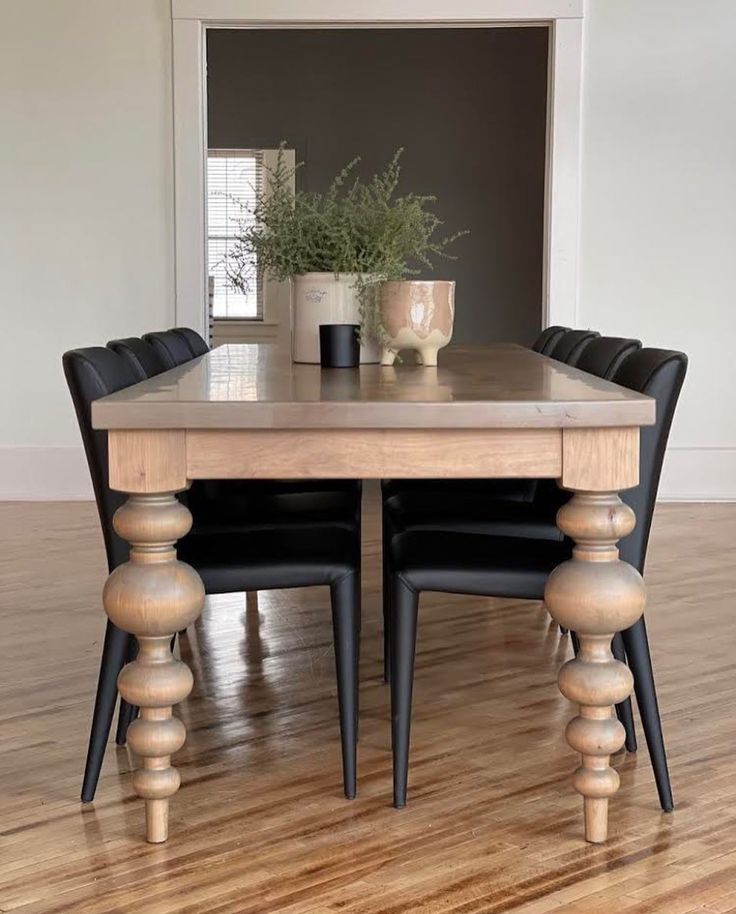Just How to Choose the Perfect Dining Area Table Legs for Your Home Decoration
Selecting the perfect dining-room table legs is a nuanced process that calls for cautious factor to consider of numerous aspects, including your area restraints, visual preferences, and useful requirements. The interplay in between styles, dimensions, and materials can considerably affect the setting of your dining area, making it vital to approach this choice methodically. As you consider the myriad choices offered, it ends up being clear that the right choice extends past simple appearance; it can improve your total dining experience. What aspects should you focus on to guarantee your option enhances your home's one-of-a-kind personality?
Assess Your Eating Area
Examining your dining space is crucial for selecting the right table legs that match both appearances and functionality. Begin by measuring the measurements of your dining location, consisting of ceiling elevation, floor space, and distance to other furnishings. This details will certainly aid identify the ideal size and elevation of your table, which directly influences the option of table legs.
Following, take into consideration the style and format of your eating room. For circumstances, an open-concept style may benefit from table legs that offer aesthetic agility, such as slender metal or acrylic choices. Alternatively, an extra traditional setting may require tough wooden legs that give a feeling of durability.
Review the existing shade combination and materials in your eating location. Harmonizing the table legs with these components creates a natural look that improves the general decor.
Eventually, a complete evaluation of your eating area will direct you in making an educated choice, ensuring that your table legs not just enhance the visual charm yet additionally offer useful purposes.
Consider Your Style Preferences
When picking dining area table legs, it is vital to show on your individual style choices, as they dramatically influence the general aesthetic of your eating space. Your option of table legs can either enhance or comparison with existing décor, making it crucial to align them with your recommended interior style theme.
If your home leans towards a modern visual, think about sleek steel or minimalist wooden legs that give a tidy, minimalist look. For an extra traditional technique, elaborate wood legs with complex makings can include a touch of style and elegance. Industrial styles profit from durable, resources such as redeemed wood and steel combinations, mirroring a sturdy appeal.
In addition, farmhouse and rustic designs commonly favor durable, beefy legs that evoke a feeling of warmth and convenience. On the other hand, if your decor is diverse, you may pick unconventional shapes or a mix of materials to create aesthetic rate of interest.

Evaluate Material Options
The choice of material for eating space table legs plays a critical duty in both resilience and visual charm. Common products include wood, steel, and composite alternatives, each offering distinctive attributes that can affect the overall look and long life of your table.
Timber is a timeless choice, recognized for its heat and adaptability. Hardwoods like oak and walnut provide outstanding stamina and can be ended up in various stains to match any kind of decor. Nevertheless, softwoods like ache are more prone to dents and scratches, making them less suitable for high-traffic locations.
Metal legs, often crafted from steel or aluminum, emanate modernity and commercial appeal. They are immune and highly sturdy to put on, making them appropriate for families with kids or regular celebrations (dining room table legs). Furthermore, metal can be completed in different colors, enhancing the customization opportunities
Composite products, such as MDF or laminate, offer cost and varied styles. While usually less resilient than strong wood or metal, they can still supply an elegant look and are commonly very easy to maintain.
Inevitably, the material you pick should line up with your lifestyle, aesthetic preferences, and the degree of use your dining table will experience.
Determine Height and Size
Picking the ideal height and dimension for your dining-room table is vital for both performance and convenience. The typical elevation learn the facts here now for dining tables commonly ranges from 28 to 30 inches, allowing sufficient legroom for the majority of individuals when seated. It is crucial to take into consideration the measurements of your eating space and the kinds of chairs you prepare to use.

Moreover, think about the proportions of your dining room. A bigger table in a sizable location can develop a grand setting, while a smaller sized table functions well in even more intimate settings. Eventually, the ideal height and size will certainly integrate with your total design and improve the eating experience for you and your visitors.
Explore Customization Opportunities

In addition, the design of the legs can be tailored to fit various styles, such as rustic, contemporary, or commercial. Tapered legs can stimulate a mid-century modern feeling, while chunky, block-style legs may reverberate with conventional or farmhouse design.
Homeowners can also discover shade finishes, from all-natural timber spots to repaint, have a peek at this site enabling them to match or comparison with the tabletop and bordering decor.
Moreover, leg elevation can be changed to fit particular seating plans or personal preferences, improving both convenience and capability.
Finally, unique embellishments, such as carvings or ornamental braces, can further individualize the table legs, making the dining experience not simply a dish but a statement piece in the home. By taking into consideration these customization choices, home owners can create a dining space table that really reflects their individuality.
Conclusion
Selecting the ideal eating room table legs calls for cautious consideration of numerous aspects, consisting of the measurements of the dining room, design choices, material toughness, and desired height. Modification options even more improve the capacity to attain a cohesive visual that enhances the total decoration. By systematically assessing these aspects, house owners can make sure that the chosen table legs not only satisfy practical requirements but additionally contribute favorably to the eating experience and atmosphere of the home.
Selecting the excellent eating room table legs is a nuanced process that needs cautious factor to consider of numerous aspects, including your space restrictions, visual preferences, and sensible requirements.Assessing your dining room is critical for choosing the right table legs that enhance both looks link and capability.When establishing size, determine the location where the table will be positioned to guarantee it fits conveniently, enabling for at the very least 36 inches of clearance around the table for simple activity. A bigger table in a roomy location can develop a grand ambiance, while a smaller sized table functions well in more intimate setups.Picking the suitable eating space table legs calls for careful consideration of various aspects, consisting of the measurements of the dining space, design preferences, product longevity, and desired height.